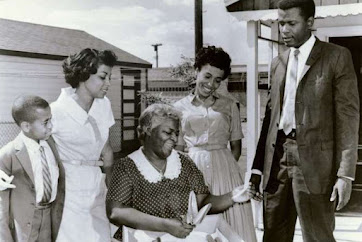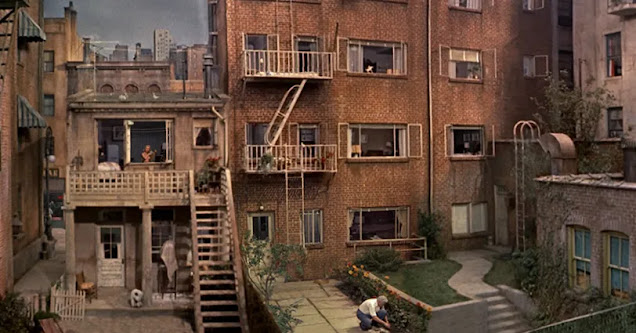The Memoirs of Underrepresented Groups
For class today, we had to read "The White House" by Claude McKay, which details the speaker's rage at the treatment of Black people in the United States. McKay leads the reader through the battle the speaker endures to contain themselves and emotionally rise above the racism they face on a daily basis. This piece connects well to A Raisin in the Sun, by Lorraine Hansberry, which we read and analyzed earlier in the semester. In that play, Walter Lee Younger is shown as desperate, seeking a way to elevate his status both financially and socially. He longs to follow his dreams, but is constricted by the society in which he lives: America. He may have once been composed; in fact, his mother claims he was, but his economic status has driven him to anger by the play's onset, resulting in a tirade of negative emotions. He is resentful and pained, obviously past the point of controlled calm that is depicted in "The White House."
The Younger family in A Raisin in the Sun
However, despite Walter Lee's desperate anger, he never rises to violence (apart from gripping the collar of a business partner), following along with the narrative provided in "The White House." This pacifist stance was one taken on by many in the Civil Rights Movement, with Martin Luther King Jr. encouraging peaceful protest.
In Hansberry's play, one segment in particular truly connects to McKay's poem for me, which is when the Younger family purchases and plans to move into a home located in a white neighborhood. The reaction they receive is incredibly negative, with the community attempting to force them out before they had even officially moved in. One line in "The White House" connects to this narrative well: "A chafing savage, down the decent street" (7). The Youngers were immediately seen as lesser-than, eliciting fright in white people simply at the idea of their presence in the neighborhood. They even send Lindner, a representative of the Clybourne Park Improvement Association, in an attempt to convince them to not move. Such negativity would repel anyone, but the Youngers persisted, moving into the community regardless of the racism against them. They resist "the potent poison of [their] hate" (14), allowing their more positive feelings to prevail.




Comments
Post a Comment